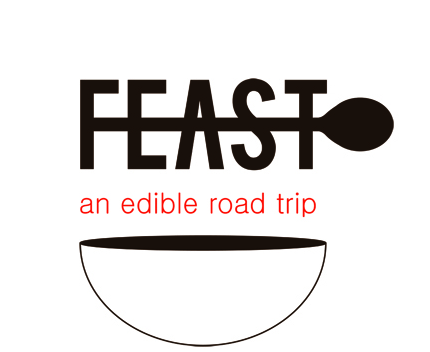Raspberry Point Oyster Company
Oysters.
Raw, slimy, cold oysters.
I’ve never met a soul who is indifferent about oysters: you either love them or hate them. Fortunately for us, our arrival on the east coast resulted in an increased adoration (and consumption) of oysters, and we both started to actually crave them, a new feeling. PEI is famous for them, so we knew our cravings were in good hands, and their abundance on the island made meal times especially exciting.
Raspberry Point Oyster Company (near Cavendish) is owned by Scott Linkletter, the dynamic island entrepreneur behind Cows Creamery, an iconic PEI ice cream establishment (more to come on that later). The oyster company started nearly 20 years ago, distributing roughly 1800 oysters the first year, and continued to grow. They now employ 8 full-time staff and distribute 5.5 million oysters per year. Before our visit to Raspberry Point, I knew almost nothing about these bivalve molluscs, but now I know I can call them that! Rich, the manager, kindly took us out on the boat to view the oyster beds where the shellfish are raised.
Oysters feed by filtering algae, plankton, and other minerals in the ocean water, and
they take on very different characteristics depending on the region. The salt content of the water, the mineral concentration, and the greatness of the tidal exchange of water all impact the end result. Raspberry Point oysters are purchased from local island fishers when they are about 2 inches long, then raised in Raspberry Point waters until they reach a desirable size (the minimum is 3 inches). Because oysters are filtering machines, it only takes about 2 weeks for them to take on the characteristics of a typical Raspberry Point oyster, which is a clean, salty flavour with a distinctly sweet finish.
Despite the icy waters that surround the island, PEI oysters thrive, and are some of the northern-most reproducing oyster populations. At Raspberry Point, they harvest oysters almost the entire year, excluding March when the oysters are too weak to survive transport. They harvest throughout the winter by keeping the oyster beds about 15 feet below the surface, a safe distance from any ice.
It was a cold day on the water in mid-October, and I couldn’t help but think how frigid it must be when harvesting oysters in January or February. Due to the cold water temperatures, PEI oysters grow slower, and can take anywhere from 6-8 years to become harvest size - you can roughly calculate an oyster's age by looking at the ‘rings’ on the shell, similar to a tree!
Rich explained that the appeal of a fresh oyster is largely cultural. People typically want fresh oysters, but in northern New Brunswick, for example, oysters are aged before they are eaten. Because they are so resilient and can live out of water for up to 2-3 months, the oysters are left to feed on the liquor in their shell for a few weeks before they're shucked and eaten. This process is called ‘seasoning,’ and creates an entirely new flavour profile. Neither way is ‘right’ or ‘wrong,’ but however you eat it, the oyster must be alive when shucked or it can be dangerous to consume.
Rich enlightened us with another interesting fact: sometimes, almost more desirable than the oyster meat is the oyster shell. It’s all about aesthetics; people want an oyster that has a perfect tear-drop shape with a deep ‘cup’ (the area where the oyster sits). While the shell has very little to do with the overall flavour, oysters with a naturally occurring ‘perfect’ shell are considered to be choice oysters. Oh the vanity!
Thanks so much to Rich for taking us out. Now I’m seriously craving a freshly shucked bivalve mollusc.
-DV



